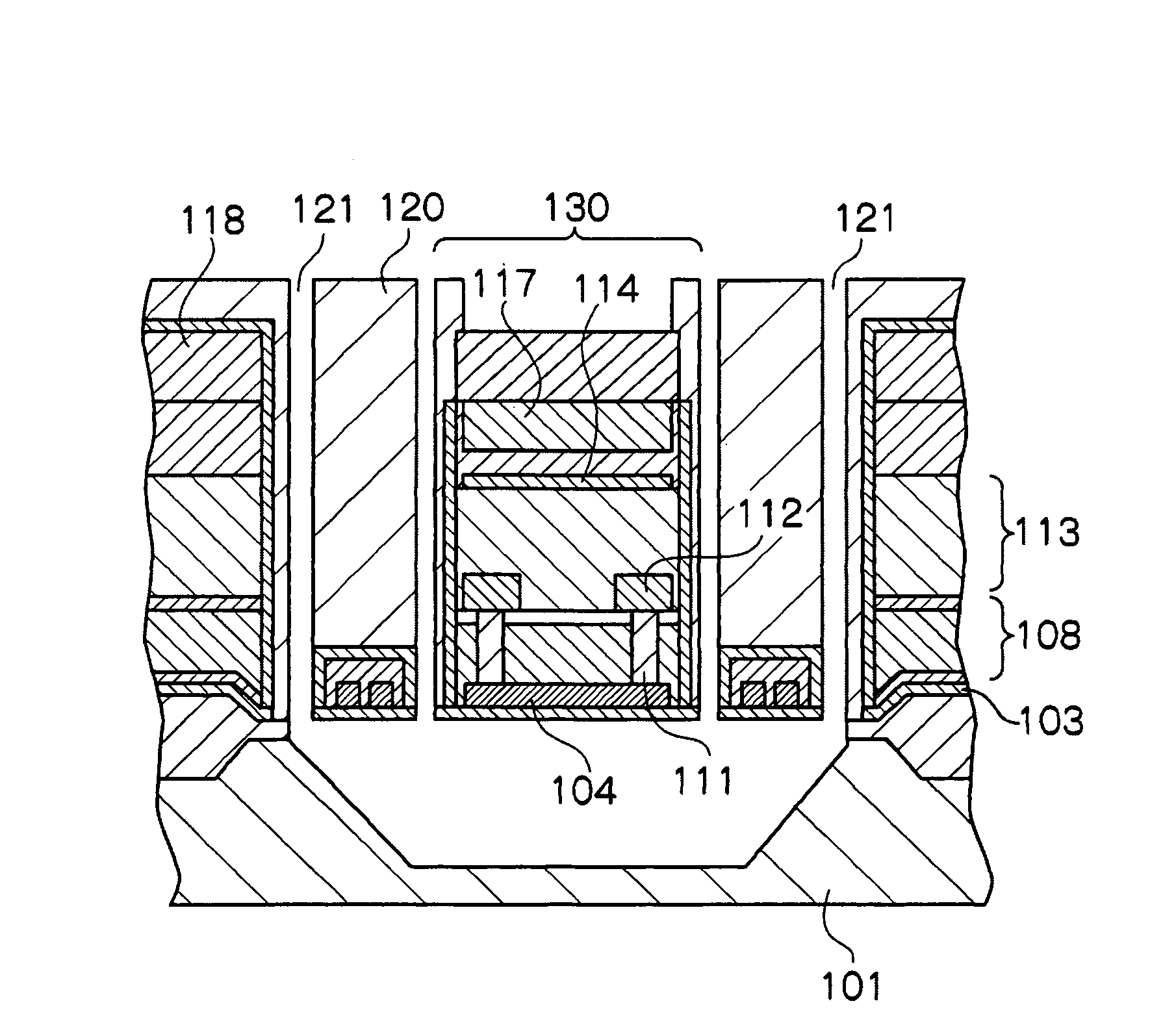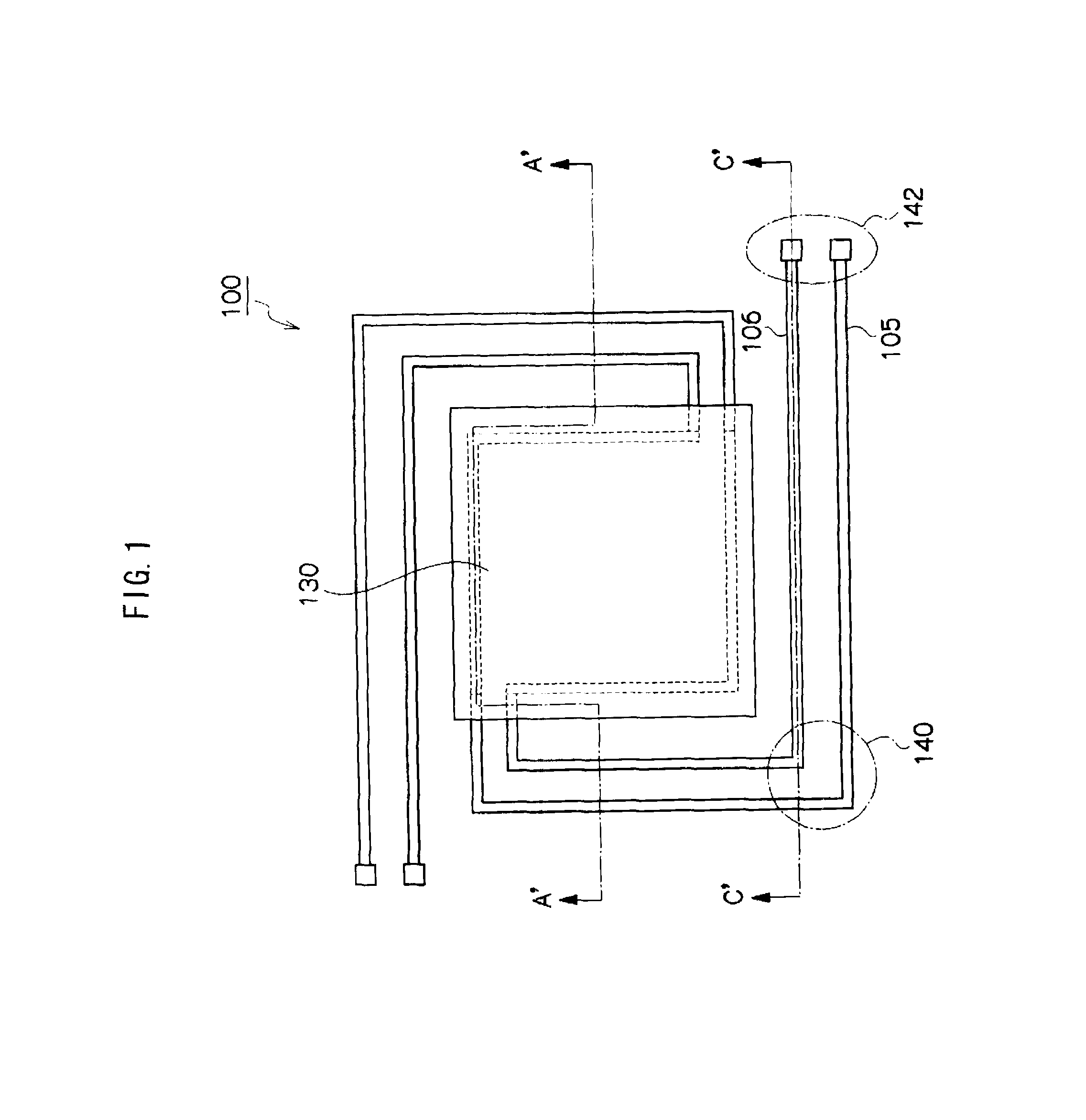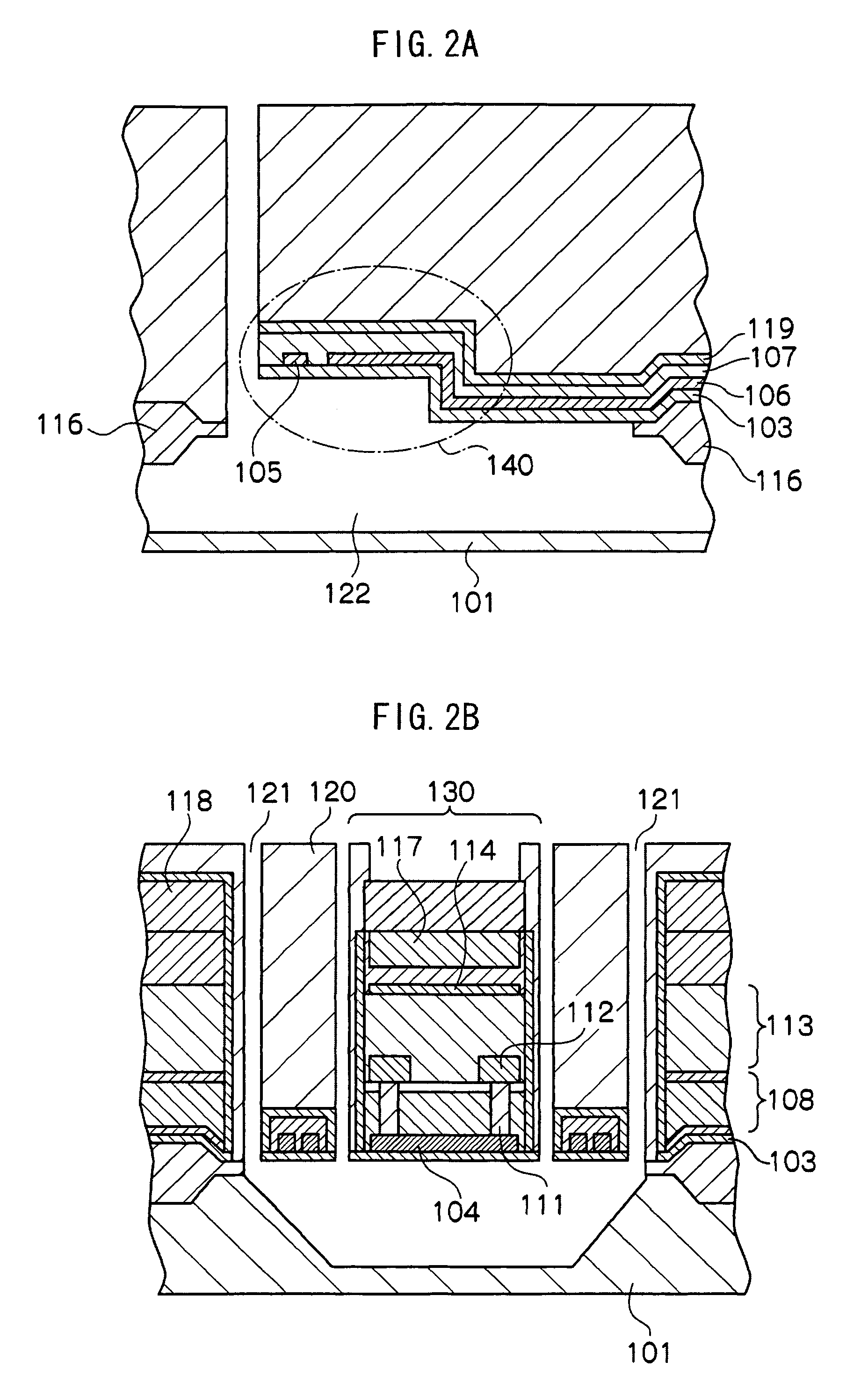Infrared detector and fabricating method of infrared detector
a technology of infrared detector and fabricating method, which is applied in the field of infrared detector, can solve the problems of large sensor, less effective beam length, and more strain
- Summary
- Abstract
- Description
- Claims
- Application Information
AI Technical Summary
Benefits of technology
Problems solved by technology
Method used
Image
Examples
first exemplary embodiment
[0073]FIG. 1 is a schematic top view of an infrared detector in a first exemplary embodiment of the invention. FIG. 2A is a C-C′ sectional view of FIG. 1 of an infrared detector in the first exemplary embodiment of the invention. FIG. 2B is an A-A′ sectional view in FIG. 1 of the infrared detector of the first exemplary embodiment of the invention.
[0074]In an infrared detector 100 in the first exemplary embodiment of the invention, a concave portion is formed in a silicon substrate 101 to dispose a void 122. The void 122 is formed by wet etching the silicon substrate 101, and, as shown in FIG. 2B, a sectional shape thereof is, for instance, a trapezoid and, since a (100) plane is etched, an inclined plane becomes a (111) plane. Above the void 122, an infrared receiver 130 is located and the infrared receiver 130 is supported by a beam located above the concave portion and connected to the infrared receiver 130 and a sidewall portion of the silicon substrate 101. A...
second exemplary embodiment
[0088]As an infrared detector in the second exemplary embodiment of the invention is an exemplary embodiment where, as shown in FIG. 4, when a beam is extracted from an infrared receiver 230, the beam is extracted from a position set higher by a strain amount.
[0089]Usually, when external impulse is applied, as shown in FIG. 3, a bent portion 140 is most bendable. However, an infrared detector 200 shown in FIG. 4, also to generation of bending due to the self-weight of other than the bent portion or the stress, is preferred in a point that the bent portion does not come into contact with a silicon substrate.
Fabricating Method of Infrared Detector in First Exemplary Embodiment of the Invention
[0090]A fabricating method of an infrared detector in a first exemplary embodiment of the invention includes a step of forming a first polysilicon layer having a step on a silicon substrate, a step of forming an insulating film on the first polysilicon layer, a step of forming a second polysilico...
third exemplary embodiment
[0101]FIG. 11A is a schematic top view of a conventional infrared detector. FIG. 11B is a partial schematic top view of the conventional infrared detector. FIG. 11C is a partial schematic top view of an infrared detector of a third exemplary embodiment of the invention, and FIG. 11D is a partial schematic top view of a modified example of an infrared detector in a third exemplary embodiment of the invention.
[0102]The infrared detector in the third exemplary embodiment of the invention is characterized in that, in FIG. 11A, in a bent portion 740 where a beam is most bendable, a convex shape in a top view such as shown in FIG. 11C is formed. By thus characterizing, in comparison with a shape of FIG. 11B, when a beam is bent, a direction of external stress is altered to enable to suppress a strain amount of the beam from increasing. The convex shape in a top view is preferably disposed to at least one of bent portions of the beam. Furthermore, as a more preferable exemplary embodiment,...
PUM
 Login to View More
Login to View More Abstract
Description
Claims
Application Information
 Login to View More
Login to View More - R&D
- Intellectual Property
- Life Sciences
- Materials
- Tech Scout
- Unparalleled Data Quality
- Higher Quality Content
- 60% Fewer Hallucinations
Browse by: Latest US Patents, China's latest patents, Technical Efficacy Thesaurus, Application Domain, Technology Topic, Popular Technical Reports.
© 2025 PatSnap. All rights reserved.Legal|Privacy policy|Modern Slavery Act Transparency Statement|Sitemap|About US| Contact US: help@patsnap.com



